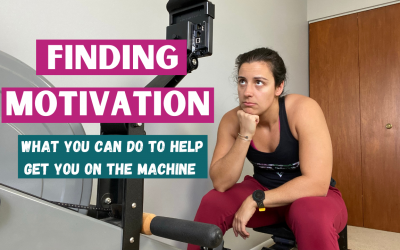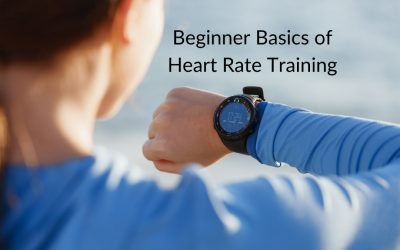How to Mix in Other Exercises With Rowing
Many people can be satisfied with workouts that only involve rowing on the rowing machine. However, even I can admit that can get boring after a while.
If you’re going to start mixing in other movements, it’s good to keep a couple of things in mind.
I need to throw this in too, that if you want great results with your fitness, hiring a coach who knows how to program with different intensities and movements will help you reach your goals faster.
But I also know sometimes you need an idea for a workout so you can move that day. So here are some general rules for incorporating other movements into your rowing workouts.
These principles can also be applied to any kind of personalized workout programming.
1) Stick to beginner movements to gain strength, then move to intermediate movements.
This may seem like a no-brainer, but a lot of people want to skip to the fancy movements before they have the strength to do those movements properly.
If this is your first attempt at incorporating other movements, this is especially important. You need a decent base of strength before working your way up to harder movements.
2) Learn advanced movements from a coach.
These movements can have a higher risk of injury if you do not perform them correctly. That’s why it’s important to find a coach who can teach you these movements before you do them on your own.
And no, watching a couple of videos online and being “pretty certain” you are mimicking them correctly doesn’t count. At the bottom of this post I have movements separated into beginner, intermediate and advanced movements.
3) If brand new, start with 3 or fewer movements (other than rowing) with less than 10 reps each round.
For example, if you wanted to do a workout with 4 rounds, incorporating 500m rows at the beginning, pick 3 or fewer movements from the beginner category with an easy rep scheme to remember;
It would look like this:
4rds:
500m row
5 Burpees
5 Air Squats
5 Vups
You can increase the number of reps for next time once you know you can handle these movements.
4) When incorporating weight, start on the lighter side.
It’s better to do a workout and find out you can push yourself harder next time than to do too heavy of a weight for too many reps and burn out.
This will also help limit any injuries you may sustain from overuse.
5) Go back down in reps as you try harder movements.
If you’ve worked up to being able to do a larger number of beginner movements in a workout and want to try an intermediate level movement, decrease the number of reps for that harder movement.
For example:
3rds:
1000m row
20 Air Squats
10 Weighted Step ups
20 Sit ups
Notice that the harder movement (weighted step ups) has fewer reps. Again, this is in order to keep you safe. You would also want to start out with a light weight.
Remember, there’s always tomorrow to challenge yourself with a heavier weight. An injury prevents you from trying again tomorrow.
6) Don’t go as hard as possible all the time!
This may be a shocker, but it’s not healthy to go all out on every single workout. It’s healthy to approach certain workouts with the mentality of “moving, but not sprinting”.
Even longer workouts, where you could easily talk to someone during it, have great health benefits!
When referring to beginner, intermediate, and advanced movements, see my lists below. This isn’t an exhaustive list. I’m sure there are plenty of different movements that I’ve missed. If you are ever wondering which category a movement falls under, please message me on IG or Facebook! I’d be glad to help you out.
In combination with my post “5 Kinds of Rowing Workouts”, this gives you a good base to start making your own workouts!
For reference: DB – Dumbbell, KB – Kettlebell, BB – Barbell
Beginner
Air squats
Lunges
Knee Pushups
Running
Burpees
V-Ups
Sit-Ups
Single Under (jump rope)
Step-ups
Farmer Carry
Intermediate
Cossack squats
Kettlebell (KB) Swings
“Box” jumps
Weighted Step Ups
Burpee Box Jump Over/Step Over
Jumping Lunges
Pushups
Handstand Holds Against Wall
Wall Walks
Advanced
Pistols
Double Unders (jump rope)
Devil Press
DB/KB/BB Squats
DB/KB/BB Deadlift
DB/KB/BB Clean
DB/KB/BB Clean and Jerk
DB/KB/BB Snatch
DB/KB/BB Thruster
DB/KB/BB Shoulder to Overhead
DB/KB/BB Overhead Walking Lunge
Handstand Push-Ups
Handstand Walking
How to Find Motivation to Workout
This post is going to be a little bit different today. I'm going to be talking to you about finding motivation to get on the rowing machine. Just to be clear, this video is NOT for the person who is struggling to take a rest day. This is for you if (for example) you...
Beginner Basics of Heart Rate Training in Rowing
You may read heart rate training and think you need to start paying attention to all these numbers or buy all of the things to track your heart rate. While you can buy some gear to help you accomplish heart rate training, it’s not required. Sure, the gadgets will help...
A Strategy for Getting Your Best 1k Time
With the World Rowing Virtual Indoor Rowing Sprints just around the corner, I’m dropping some tips to get a better 1K time. The first bit I harp on a lot. Having good technique will help you get faster, but this doesn’t come overnight. However, there are other things...



